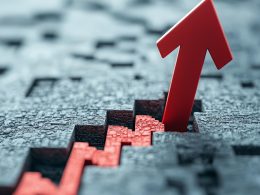by Brian Wesbury, Chief Economist, & Robert Stein, Deputy Chief Economist, First Trust Portfolios
We’ve mentioned this before, but it bears repeating. It seems that investors pay as close attention to what the government is doing, as they do to actual business news. We don’t think investors are wrong to do this, but it’s only because government has become so big.
The US has moved from a simple Keynesian-type model to what we call “State-Run Capitalism.” When the economy turns soft, a typical “Keynesian” (demand-side) response would be to boost the budget deficit or print more money.
Now, the government is running permanent, and very large, deficits and using its budget to fund semiconductors, EVs, solar and wind energy generation, as well as redistributing more money to immigrants and students who are in debt. This all smells and looks like central planning…or State-Run Capitalism.
At the same time, because the Fed is now using an abundant reserve monetary policy, it has taken the financial system out of the process of determining short-term interest rates. Banks no longer need to trade excess reserves, so the federal funds rate has no real market. The Fed just makes that rate up.
So, here we sit in 2024, and a Wall Street Journal economics reporter, Greg Ip, just wrote a piece titled “The Economy is Great…”. We don’t think that’s really true, but real GDP did grow more than 3% last year and job growth has been robust.
A typical Keynesian response to this, the one most people were taught in economics class, would be for the government to run a surplus, or at least substantially shrink the deficit, and the Fed to be at least slightly worried about over-heating the economy.
Instead, Congress just pushed through a $1.2 trillion spending bill with a deficit that will approach $1.6 trillion, and the Fed announced that it was likely to cut rates three times in 2024.
What the heck? Why? Especially with inflation reports so far in 2024 coming in hot. The Cleveland Fed median price index is up 4.6% from 12 months ago, “supercore” CPI is up 4.3% over 12 months, and nearly 7% annualized over the past three months. With inflation this high, and the economy “great,” no traditional Keynesian would support these policies.
We don’t blame investors for reading the tea leaves and realizing that all this stimulus is probably good for the markets in the short run. Lower rates mean more growth and higher price-earnings ratios. The market seemingly (and perhaps correctly) has decided that the Fed, and the Federal Government, can manage the economy to keep stocks up.
But all of this will come with a price. No centrally-managed economy has been permanently made to go only one way. It can look good for a time, but eventually the sheer size of the government and the mishandling of monetary policy catches up. On a smaller scale, the US tried this in the 1970s, and the result was stagflation. Russia, Venezuela, and a host of other countries have all failed.
But it doesn’t happen overnight. More importantly, because the Fed has separated the growth of the money supply and the level of interest rates, rate cuts may not mean what many people think they do. Yes, rates may come down this year, but the money supply has contracted in the past year. A contraction in the money supply is never a good sign.
We still expect a recession this year. The US will have an irresponsible deficit, but it will be slightly less irresponsible than it was last year. Add in a decline of M2, and the morphine pumped into the system over the past few years has worn off.
If the Fed is cutting rates because it is an election year, and if the government is spending money in an effort to entice some voters to see it as personally beneficial to vote for big government, it’s a recipe for lousy economic outcomes.
When the government pushes money in directions that are politically beneficial, they are often not efficient in a true economic sense. This means less growth and more inflation. We are very worried about stagflation in the years ahead.
Between now, and whenever that is, the market may completely ignore it. And, investors will think the government has found a recipe for permanent prosperity. But after thousands of years of trying, and never making it happen, we bet against even this new version of State-Run Capitalism.
Brian S. Wesbury – Chief Economist
Robert Stein, CFA – Deputy Chief Economist
Click here for a PDF version















